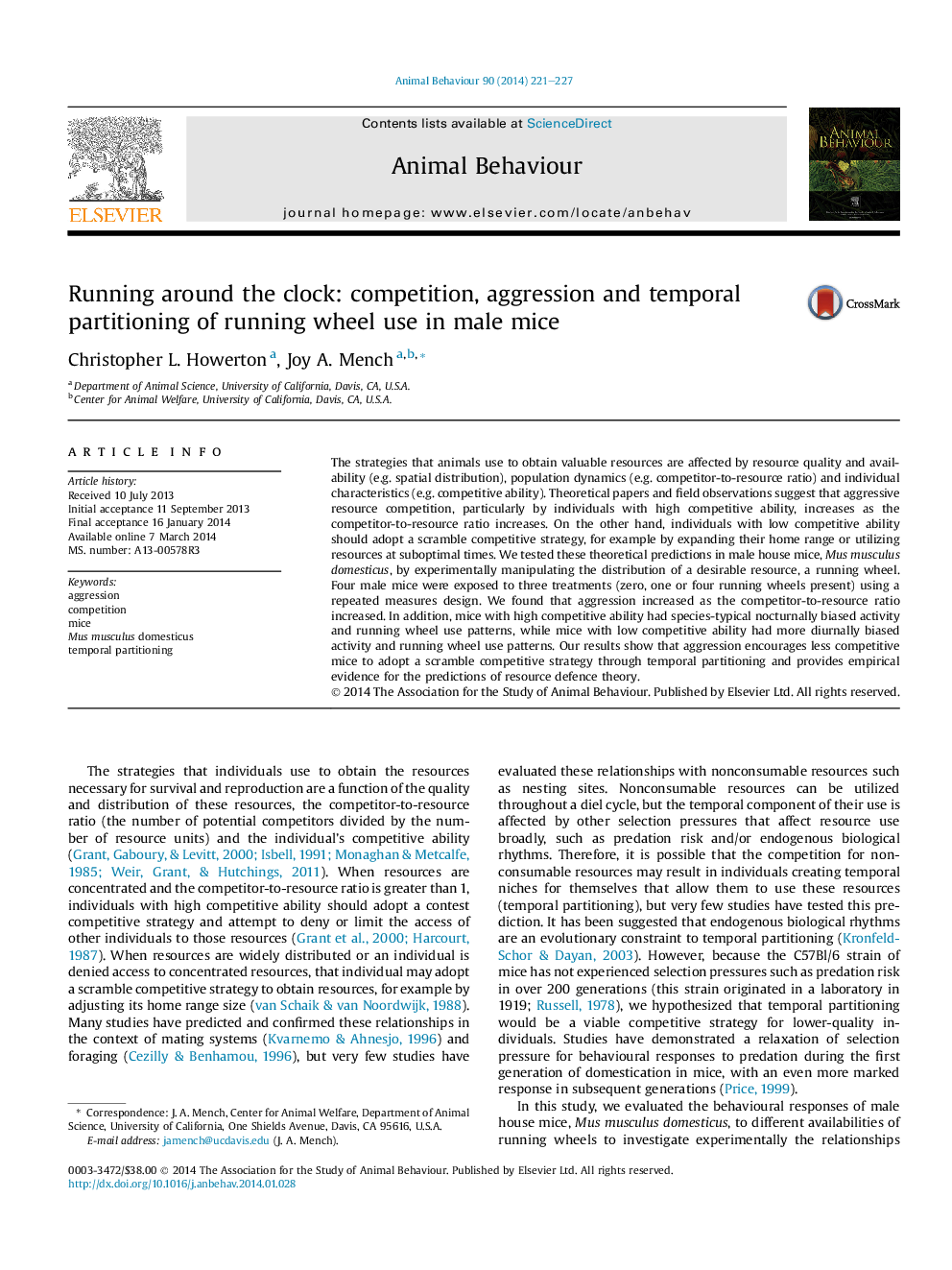| کد مقاله | کد نشریه | سال انتشار | مقاله انگلیسی | نسخه تمام متن |
|---|---|---|---|---|
| 2416393 | 1552238 | 2014 | 7 صفحه PDF | دانلود رایگان |
• We examined the effects of competition for access to running wheels on male mouse behaviour.
• Increasing the competitor-to-running wheel ratio increased aggression.
• Mice of high competitive ability had species-typical, nocturnally biased diel activity patterns.
• Mice of low competitive ability had phase-shifted, diurnally biased diel activity patterns.
• These results suggest male mice use temporal partitioning to optimize resource use.
The strategies that animals use to obtain valuable resources are affected by resource quality and availability (e.g. spatial distribution), population dynamics (e.g. competitor-to-resource ratio) and individual characteristics (e.g. competitive ability). Theoretical papers and field observations suggest that aggressive resource competition, particularly by individuals with high competitive ability, increases as the competitor-to-resource ratio increases. On the other hand, individuals with low competitive ability should adopt a scramble competitive strategy, for example by expanding their home range or utilizing resources at suboptimal times. We tested these theoretical predictions in male house mice, Mus musculus domesticus, by experimentally manipulating the distribution of a desirable resource, a running wheel. Four male mice were exposed to three treatments (zero, one or four running wheels present) using a repeated measures design. We found that aggression increased as the competitor-to-resource ratio increased. In addition, mice with high competitive ability had species-typical nocturnally biased activity and running wheel use patterns, while mice with low competitive ability had more diurnally biased activity and running wheel use patterns. Our results show that aggression encourages less competitive mice to adopt a scramble competitive strategy through temporal partitioning and provides empirical evidence for the predictions of resource defence theory.
Journal: Animal Behaviour - Volume 90, April 2014, Pages 221–227
